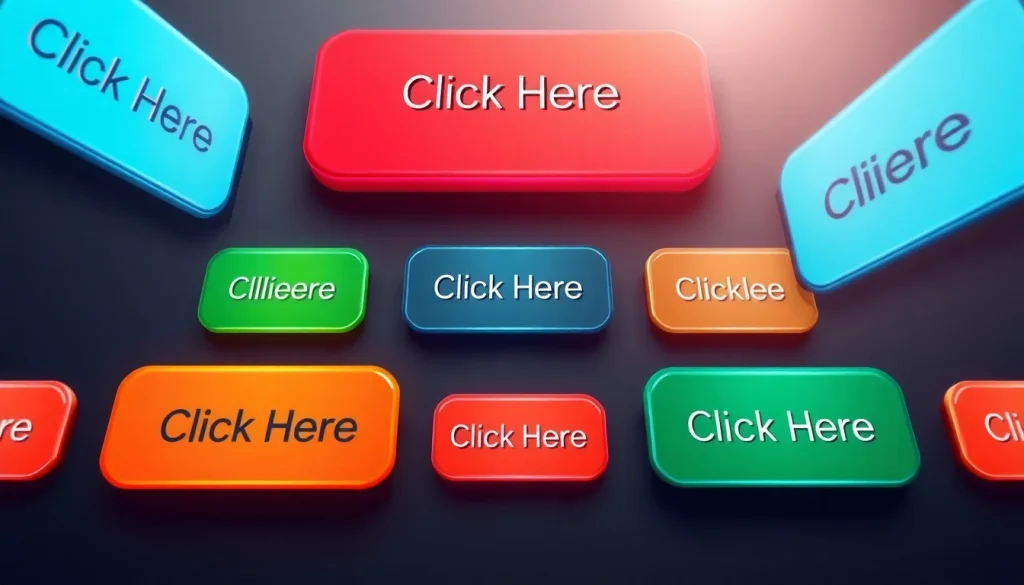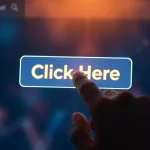In the digital age, words carry immense power, especially when it comes to guiding users through online content. Yet, certain phrases, such as “click here,” have found their way into common use in ways that may not serve users effectively. While it has been a staple of web interaction for years, it’s time to assess its practicality and impact. Instead of relying on vague calls to action that lack context, alternatives can provide clarity, enhance user experience, and even improve SEO. To explore the implications of using “click here,” let’s delve into the essentials of hyperlink text and alternative strategies. For more insights, you can Click Here to learn more.
Understanding Link Text: The Basics
What Does Click Here Really Mean?
The phrase “click here” originated as a straightforward instruction, telling users exactly what to do when they encounter a hyperlinked section of text on the web. However, its simplicity can lead to misunderstandings. When directing users to another page or resource, this phrase often fails to communicate the nature of that destination. Instead of enticing users with what they will find upon clicking the link, it merely instructs them to take an action without providing context. This lack of specificity can frustrate users who seek meaningful engagement.
Common Practices in Hyperlink Text
Effective link text serves multiple purposes. First, it conveys an informative description of what the link contains; second, it encourages users to explore further. Best practices dictate that hyperlink text should be concise, descriptive, and action-oriented. For example, instead of saying “click here for a discount,” a more effective phrase would be “Get your exclusive discount now.” This wording not only describes the action but also implies an immediate benefit, enhancing user interest and engagement.
Importance of Clear Call-to-Action Language
Call-to-action (CTA) phrases are critical for guiding users to make decisions that can benefit them or enhance their experiences. The effectiveness of a CTA lies in clarity and motivation. When users understand precisely what they’re clicking for, they are more likely to engage. A clear CTA that includes actionable language, such as “Download the guide,” or “Sign up for our newsletter,” provides instant understanding and clarity. Such clarity addresses user intent and creates a stronger connection between the user and the action being prompted.
Why You Should Rethink Click Here Links
The Impact on SEO and Usability
Using vague link phrases like “click here” can hinder not only user engagement but also search engine optimization (SEO). Good SEO practices emphasize relevant keyword integration and content-centric linking. Search engines value descriptive hyperlink text because it informs their algorithms about what content the link leads to. If all links use “click here,” they fail to provide meaningful information about the respective pages, hurting search ranking potential. Moreover, users accessing content through screen readers gain little context on what to expect when encountering such links, thereby impacting usability.
How Screen Readers Perceive Click Here
Accessibility is a critical aspect of web design that often gets overlooked. For users relying on assistive technologies, such as screen readers, the phrase “click here” is virtually devoid of meaning. Screen readers list links in a linear manner, often stripping away surrounding context. Consequently, users with visual impairments hear “click here” without any additional information on what lies beyond the link. This presents a significant barrier, preventing many users from engaging with content effectively. Instead, more descriptive language should be employed to ensure all users, irrespective of their abilities, can interact seamlessly with online content.
User Experience: Accessibility Considerations
In the realm of user experience (UX) design, accessibility considerations should take precedence. User engagement relies significantly on how easily individuals can navigate web content. Employing targeted, descriptive link texts enhances navigation by giving users clear insights into their actions. It not only reduces confusion but also aligns with the expectations of modern web users who seek intuitive and coherent online experiences. To foster an inclusive environment, designers and content creators should prioritize crafting link texts that resonate with all users and provide clarity regarding what to expect. When users can easily determine what a link entails, overall satisfaction and engagement increase.
Effective Alternatives to Click Here
Crafting Specific Call-to-Action Phrases
When considering alternatives to “click here,” the goal is to construct phrases that uniquely convey immediate value and intent. Specificity is key. Instead of using the generic phrase, identify the desired action and their associated benefit. For example:
- Instead of “click here for details,” use “Discover event details.”
- Change “click here to subscribe” to “Join our newsletter for updates.”
- Replace “click here for recipes” with “Explore delicious recipes here.”
These alternatives provide explicit instructions along with context and value, thereby improving user engagement.
Examples of Better Link Text
To underscore the effectiveness of better link texts, consider the impact of specific examples:
- “Learn how to enhance your productivity” instead of “click here.”
- “Download your free e-book today” rather than “click here for the e-book.”
- “Access your account now” as opposed to the generic “click here to log in.”
By focusing on user intent and benefits, these phrases direct users toward actionable steps while clarifying what they can expect upon clicking the link.
Encouraging User Interaction Effectively
Creating an engaging experience requires more than just descriptive link text; it also necessitates motivating users to take action. Understanding user psychology can help craft compelling CTAs. Incorporating emotional triggers, urgency, or clear benefits can significantly influence user behavior. For example:
- “Join us today and unlock your free trial!” uses urgency and appeal.
- “Start your journey with us now!” invokes a sense of adventure.
- “Get your exclusive membership benefits!” promotes exclusivity and value.
By tapping into these psychological principles, you can encourage users to click through and interact more deeply with your content.
Best Practices for Creating Links
Integrating Keywords Naturally
Search engine optimization is paramount in driving organic traffic. Therefore, integrating relevant keywords into link text is essential. However, this must be done naturally to avoid sounding forced or awkward. When hyperlinking text, ensure it aligns seamlessly with the surrounding content. For instance, if you’re referring to a specific service, instead of linking “click here,” you could use “Learn more about our graphic design services” instead. This way, you not only provide context but also optimize the text for search engines.
Using Actionable Language in Links
Actionable language inspires users to engage. Using verbs in link text can significantly increase click-through rates. Instead of passive forms, opt for active language. Phrases like “Discover our services,” “Start your free trial,” or “Join our community” all convey a strong call to action. By framing links in this manner, users feel more compelled to interact, which can lead to an increase in engagement and conversions.
Test and Optimize Your Link Strategies
Just as content evolves, so should your linking strategies. Testing various link texts to see which resonates best with your audience is crucial. Utilizing A/B testing allows you to compare different phrases and monitor user engagement. You can analyze metrics such as click-through rates and bounce rates to assess effectiveness. If a particular link text consistently performs better, you can implement it across your content for improved overall performance. This iterative approach ensures that your linking strategies remain effective and responsive to user preferences.
Measuring the Effectiveness of Your Links
Analyzing User Engagement and Click Rates
Analytics play a vital role in understanding the performance of your links. Keeping a close eye on user engagement metrics will provide insight into how well your link texts are working. Tools like Google Analytics can track user interactions, giving you valuable data regarding which links attract the most clicks, as well as user behaviors post-click. Continuous monitoring will highlight trends and help refine your strategy over time.
A/B Testing for Optimal Results
A/B testing is a powerful method for optimizing link performance. By creating variations of link text, you can analyze which version yields better results. Follow this systematic approach:
- Define your goal (e.g., increased clicks).
- Create two link variations.
- Divide your audience and show each group a different link text.
- Monitor results and assess which variation performed better.
By regularly conducting A/B tests, you can refine your linking strategies to maximize user engagement and achieve desired outcomes.
Iterative Improvements to Link Text and Strategy
Improvement should be an ongoing process. Use data collected from engagement metrics and A/B tests to inform adjustments to your link texts. Don’t hesitate to innovate as trends evolve and user preferences shift. Additionally, consider seasonal or topical variations, as timely relevance can resonate significantly with users. Integrating feedback from user behavior helps to keep your strategies fresh and effective in attracting and retaining audiences over time.



